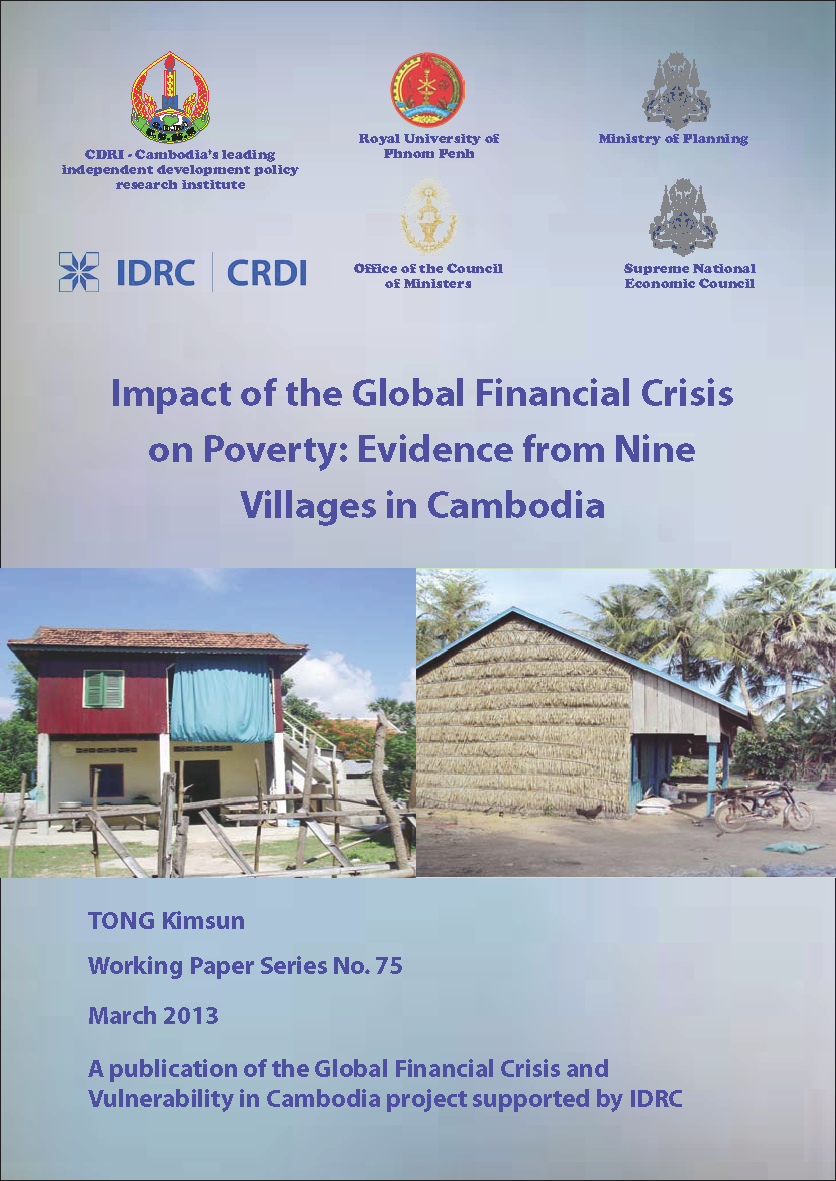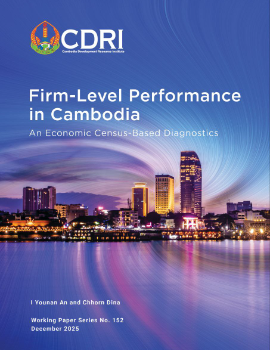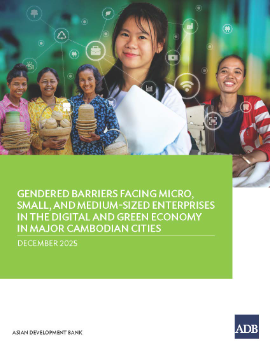
Impact of the Global Financial Crisis on Poverty: Evidence from Nine Villages in Cambodia
Keyword: Poverty headcount, global financial crisis, household consumption, rural Cambodia, panel data analysis
Abstract/Summary
This paper investigates the impact of the global financial and economic crisis on Cambodian rural households, mainly focussing on trends in household consumption and poverty, i.e. the poverty headcount ratio, poverty gap and squared poverty gap, using four-period panel data covering the years 2001, 2004, 2008 and 2011. Descriptive statistics reveal that all study villages except Andoung Trach experienced a sharp drop in consumption per capita between 2008 and 2011. As a result, the 2011 poverty headcount ratio shot up by 52.4 percent compared to 2008. The stochastic dominance approach reconfirms that the poverty headcount ratio in the nine study villages in 2011 definitely increased compared to 2008, regardless of poverty line. Furthermore, our sub-sample data (90 households) reveal that the poverty headcount ratio in 2009 was higher than in 2011. This suggests that food and oil price increases and the global financial crisis hit Cambodia’s economy hardest in 2009, after which the economy started to recover slowly. In line with our descriptive results, the econometric approach (random-effects and population-average probit models) also confirm that the global financial and economic crisis is likely to have increased the poverty headcount ratio by 37 to 44 percent. However, taking into account the fact that food and oil price increases and the global financial crisis hit Cambodia’s economy hardest in 2009, the increase in the poverty rate could be even higher.



